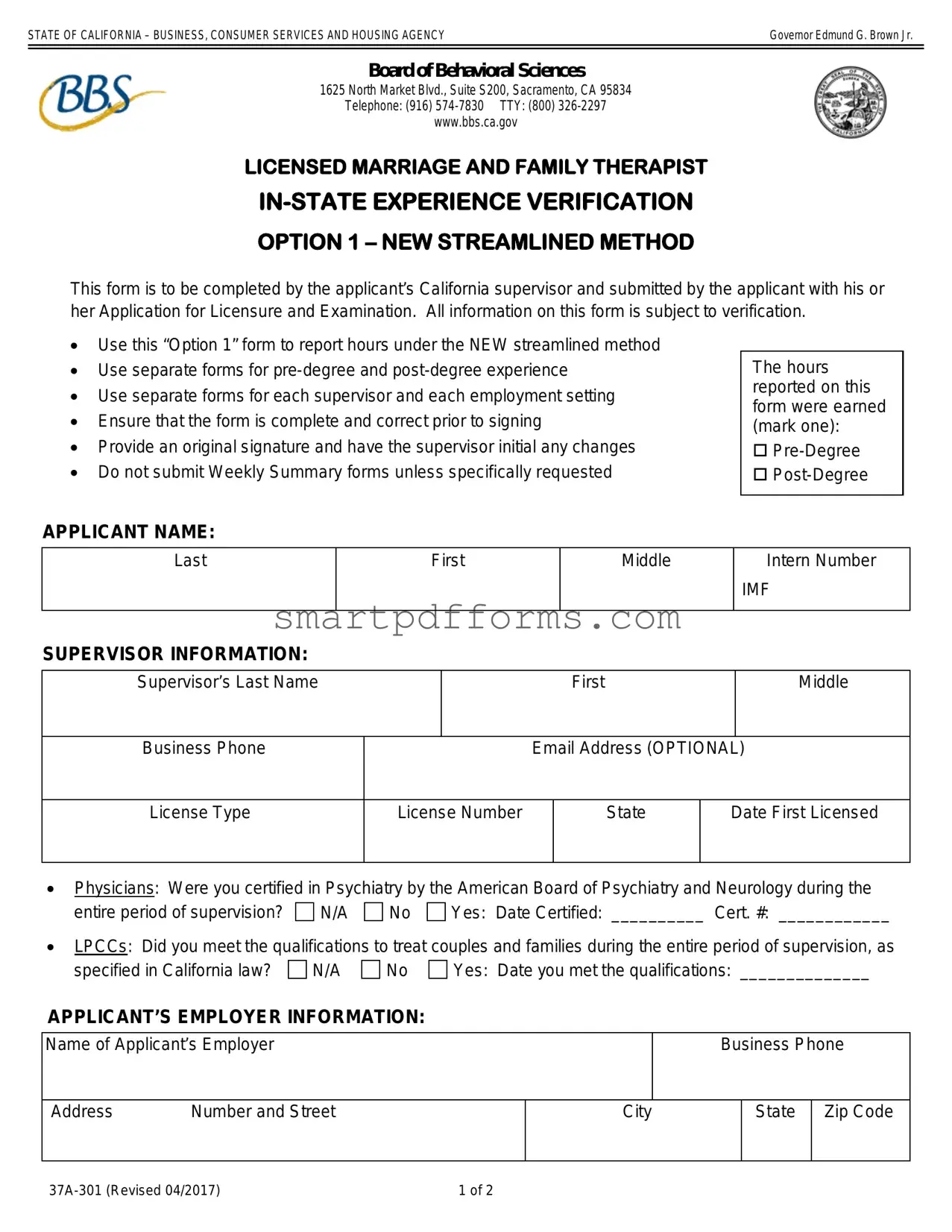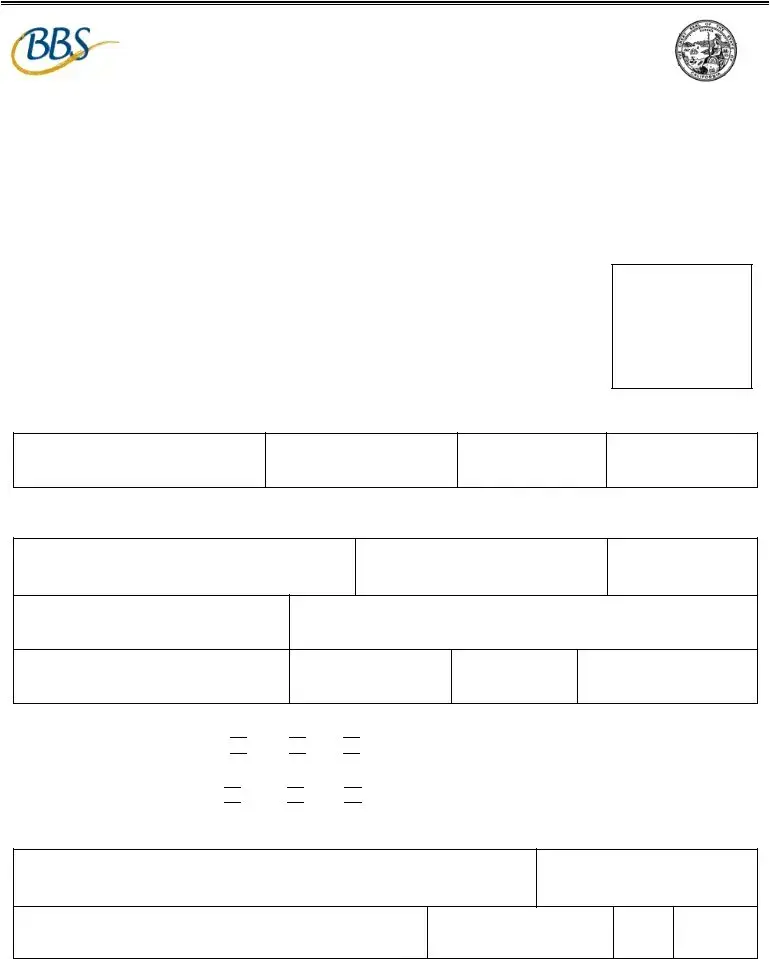STATE OF CALIFORNIA – BUSINESS, CONSUMER SERVICES AND HOUSING AGENCY |
Governor Edmund G. Brown Jr. |
Board of Behavioral Sciences
1625 North Market Blvd., Suite S200, Sacramento, CA 95834
Telephone: (916) 574-7830 TTY: (800) 326-2297
www.bbs.ca.gov
LICENSED MARRIAGE AND FAMILY THERAPIST
IN-STATE EXPERIENCE VERIFICATION
OPTION 1 – NEW STREAMLINED METHOD
This form is to be completed by the applicant’s California supervisor and submitted by the applicant with his or her Application for Licensure and Examination. All information on this form is subject to verification.
•Use this “Option 1” form to report hours under the NEW streamlined method
•Use separate forms for pre-degree and post-degree experience
•Use separate forms for each supervisor and each employment setting
•Ensure that the form is complete and correct prior to signing
•Provide an original signature and have the supervisor initial any changes
•Do not submit Weekly Summary forms unless specifically requested
The hours reported on this form were earned (mark one):
Pre-Degree
Post-Degree
Name of Applicant’s Employer
Address |
Number and Street |
37A-301 (Revised 04/2017) |
1 of 2 |
EMPLOYER INFORMATION (continued):
1.Was this experience gained in a setting that lawfully and regularly provides mental health counseling or psychotherapy?
2.Was this experience gained in a private practice setting?
3.Was this experience gained in a setting that provided oversight to ensure that the applicant’s work meets the experience and supervision requirements and is within the scope of practice?
4.For hours gained as an Intern ONLY: Was the applicant receiving pay?
If YES, attach a copy of the applicant’s W-2 statement for each year experience is claimed. If a W-2 has not yet been issued for this year, attach a copy of the current paystub. If applicant volunteered, submit a letter from the employer verifying volunteer status.
EXPERIENCE INFORMATION:
|
1. Dates of experience being claimed: |
|
From: __________________ |
To: _____________________ |
|
|
|
mm/dd/yyyy |
|
mm/dd/yyyy |
2. How many weeks of supervised experience are being claimed? __________ weeks |
|
|
|
|
|
|
|
|
3. Hours of Experience: |
|
|
|
|
|
Logged Hours |
|
|
|
|
|
|
|
|
a. Total Direct Counseling Experience |
(Minimum 1,750 hours) |
|
|
|
|
|
|
|
|
|
|
|
|
• Of the above hours, how many were gained diagnosing and treating |
|
|
|
Couples, Families and Children? (Minimum 500 of the 1,750 hours) |
|
|
|
|
|
|
b. Total Non-Clinical Experience (Maximum 1,250 hours) |
|
|
|
|
|
|
|
|
|
|
|
• Of the above hours, how many were Face-to-Face |
Hours Per Week |
Logged Hours |
|
Supervision? |
|
|
|
|
|
|
|
|
|
|
Individual |
|
|
|
|
|
|
|
|
|
|
|
|
|
|
|
Group (group contained no more than 8 persons) |
|
|
|
|
|
|
|
|
|
|
|
|
NOTE: Knowingly providing false information or omitting pertinent information may be grounds for denial of the application. The Board may take disciplinary action on a licensee who helps an applicant obtain a license by fraud, deceit or misrepresentation.
Signature of Supervisor: _______________________________________ |
Date: ______________ |
37A-301 (Revised 04/2017) |
2 of 2 |



 N/A
N/A 
 No
No 
 Yes: Date Certified: __________ Cert. #: ____________
Yes: Date Certified: __________ Cert. #: ____________
 N/A
N/A 
 No
No 
 Yes: Date you met the qualifications: ______________
Yes: Date you met the qualifications: ______________

 Yes
Yes 
 No
No
 Yes
Yes 
 No
No 
 Yes
Yes 
 No
No
 Yes
Yes 
 No
No